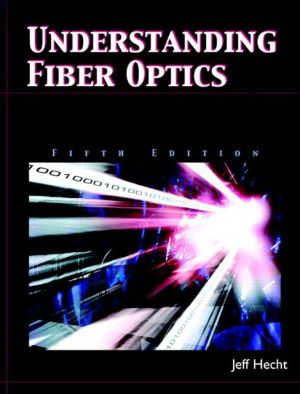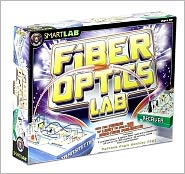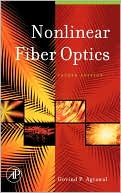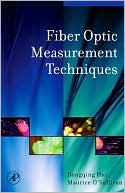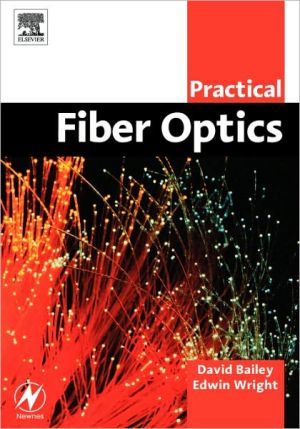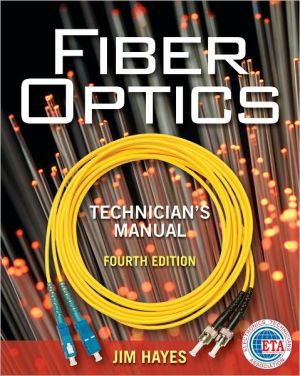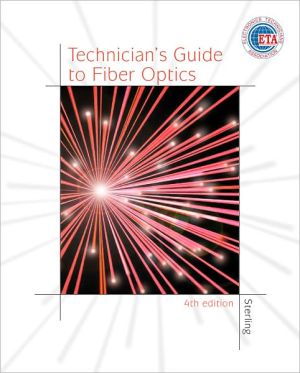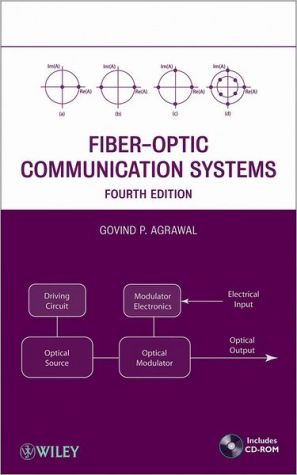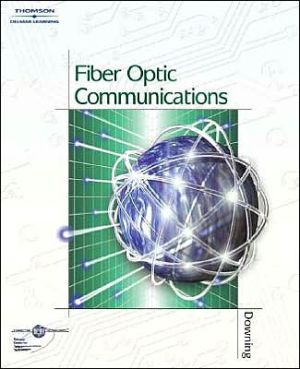Understanding Fiber Optics
This book is thorough, up to date, and provides comprehensive and intuitive introduction to fiber optics. With mathematics limited to basic algebra, the book takes a practical approach to understanding fiber optics. It thoroughly describes important concepts for the novice, building up an understanding of optical fibers, their properties, light sources and detectors, and fiber-optic components and their application in fiber-optic systems. It covers the basics of fiber-optic measurement and...
Search in google:
For courses in Introduction to Fiber Optics and Introduction to Optical Networking in departments of Electronics Technology and Electronics Engineering Technology. Also suitable for corporate training programs. Ideal for technicians, entry-level engineers, and other nonspecialists, this best-selling practical, thorough, and accessible introduction to fiber optics reflects the expertise of an author who has followed the field for over 25 years. Using a non-theoretical/non-mathematical approach, it explains the principles of optical fibers, describes components and how they work, explores the tools and techniques used to work with them and the devices used to connect fiber network, and concludes with applications showing how fibers are used in modern communication systems. It covers both existing systems and developing technology, so students can understand present systems and new developments. Features: Extensively revised introduction to fundamentals of communication (Ch. 3). Provides clearer explanations and describes the cutting-edge of the field. Expanded full-chapter coverage of Wavelength-Division Multiplexing Optics (Ch. 15). Keeps up with rapid spread of wavelength-division multiplexing. Expanded full-chapter coverage of Optical Switching and Modulation (Ch. 16). Covers newly developed technology for optical networking. Expanded full-chapter coverage of Troubleshooting and Test Equipment (Ch. 18). Provides new coverage to help technicians. A chapter on Design of Optical Networking (Ch. 22). Provides new coverage of hot emerging field. Combined, single-chapter coverage of Connectors and Splices (Ch. 13). Emphasizes common principles. Reorganized presentation of active and passive components Focuses more on their functions. Improved presentation should make it easier to teach. Revised coverage of standards. Provides better examples, more complete descriptions. Appendices of tables and reference information Gathered from various chapters, e.g., the values of important physical constants, conversion factors, and a few key formulas. Provides all-in-one-place convenience for finding information. Many new illustrations. Better illustrates principles of devices and systems. Questions to Think About 6 for each chapter. Questions are open-ended and typically include calculations. Answers included in the Instructor's Manual. Pedagogical tools, intended to stimulate thought and discussion better than multiple choice questions. Some can be used for classroom discussion. Revised Quiz Questions Each chapter includes a Quiz of 10-15 multiple-choice questions. Helps student assess their learning. Comprehensive introduction to the field From elementary principles to system applications. Accommodates a range of students and lays a solid foundation for an understanding the field and for further study. Authoritative and real-world Reflects the author's extensive experience with fiber optics as a trained engineer and professional writer who's been explaining the cutting-edge of fiber-optic technology to newcomers and professionals alike for 25 years. The many realistic examples are drawn from that experience. Provides both students and instructors with practical, first-hand insights into real-world applications. Comparative technologies Compares fiber optics with other common technologies and highlights similarities and differences. Comparisons help students understand the advantage of different technologies. Limited mathematics; worked examples Uses simple algebra and steps through some sample calculations. Less reliance on equations. Makes the subject accessible to entry-level students. Comprehensive and comprehensible explanations Includes analogies, explains industry terminology, describes specific applications of the technology, and avoids confusing acronyms. Provides enough explanation for students who otherwise might not get the idea the first time. Many examples from elementary electronics But does not require an electronics background. Familiar examples from consumer electronic systems, home telephones, and personal computers match the usual background of students. Clear and simple diagrams Explains important concepts. Shows how components work, focusing on important principles. Key point summaries In the margins, next to the topics being discussed. Provides students with a convenient in-text study and review tool. Glossary. Gives students quick translations of specialized terms and acronyms. Suggestions for further reading. Guides students to resources for further study. Booknews An introduction to fiber optics utilizing a nontheoretical, nonmathematical approach to convey the technical details of fibers, the tools used to work with them, the devices used to connect fiber networks, and fiber optic applications. Includes b&w illustrations, diagrams, and a glossary. Earlier editions were published in 1993 and 1987. Annotation c. by Book News, Inc., Portland, Or.
1. An Introduction to Fiber Optics.2. Fundamentals of Fiber-optic components.3. Fundamentals of Communications.4. Types of Optical Fibers.5. Properties of Optical Fibers.6. Fiber materials, structure and manufacture.7. Specialty Fibers.8. Cabling.9. Light Sources.10. Transmitters.11. Receivers.12. Repeaters, Regenerators, and Optical Amplifiers.13. Connectors and Splices.14. Couplers and Other Passive Components.15. Wavelength-Division Multiplexing Optics.16. Optical Switches, Modulators, and other Active Components.17. Fiber-Optic Measurement.18. Troubleshooting and Test Equipment.19. System and Optical Networking Concepts.20. Fiber System Standards.21. Single-Channel System Design.22. Optical Networking System Design.23. Global Telecommunications Applications.24. Regional and Metro Telecommunications.25. Local Telephone or "Access" Networks.26. Internet Access and Local-Area Networks.27. Video transmission.28. Mobile Fiber-Optic Communications.29. Fiber-Optic Sensors.30. Imaging and Illuminating Fiber Optics.Appendices.Glossary.
\ BooknewsAn introduction to fiber optics utilizing a nontheoretical, nonmathematical approach to convey the technical details of fibers, the tools used to work with them, the devices used to connect fiber networks, and fiber optic applications. Includes b&w illustrations, diagrams, and a glossary. Earlier editions were published in 1993 and 1987. Annotation c. by Book News, Inc., Portland, Or.\ \ \ \ \ From The CriticsProviding a non-theoretical and non-mathematical approach to the subject, this textbook presents the technical details of fibers, describes the tools used to work with them, explains the devices used to connect fiber networks, and details fiber optics applications. Chapters describe the types of optical fibers, their properties, manufacturing, components, standards, designs, and applications. Diagrams outline major concepts, and a glossary defines key terms. Hecht's credentials are not listed. Annotation c. Book News, Inc., Portland, OR (booknews.com)\ \
